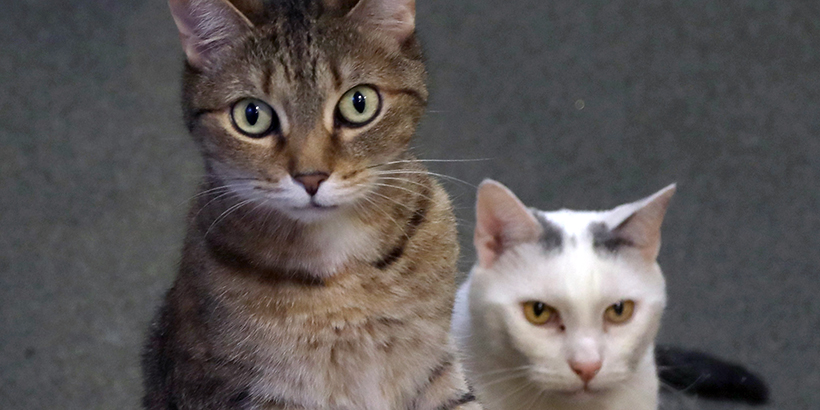
Are you bringing a new cat into your family and already have a resident feline at home? Here’s how to prepare for the best relationship between your new cat and your current one.
Before your new cat enters your home:
- All pets should be spayed/neutered.
- Make sure both cats have been cleared by a veterinarian for any medical issues that can cause stress and contribute to behavior changes.
- Trim your cat’s nails.
- Set up supplies for your new cat in an area where they can be separated from your current cat. They should be able to hear and smell each other, but not see or touch each other.
Steps to take after room is set up:
Step 1: The cats know the other cat is in the house. Let them stay in their separate rooms to take in the noises and smells of the other cat. This is a great time for you to sit and get to know your new cat.
Step 2: On day three, switch the cats’ locations so they can investigate each other’s scents. This also allows the new cat to explore a different section of your home and the existing cat to investigate where the new smell is coming from. Repeat this step for about 15 minutes 3x a day until the cats are comfortable moving around the other cat’s space.
Step 3: Play with each of the cats near the door that separates them. Encourage them to paw at toys under the door. Eventually the cats may play under the door with each other. Please make sure that they are supervised. The cats should not be left alone to tease each other.
Step 4: Place a food dish for each cat at their side of the door about 2 feet away. Limiting their feeding to these sessions will help ensure a hungry, motivated cat. Do a minimum of 2 (10-15 minutes each) of these social feeding sessions per day and end on a positive note. If the cats are eating happily with no negative behavior displayed for a few days, move the food bowls closer on each side of the door by a few inches. Repeat the process until they are able to eat peacefully on either side of the door. If you begin to notice aggressive behavior return to the last distance when no negative behavior was displayed.
Step 5: Consider opening the door slightly, or add a gate to the doorway so that the cats can interact in a safe and controlled manner.
Step 6: Once they are able to eat side by side at the door with no aggressive behavior, they may be allowed to interact while supervised. Make sure they have plenty of places to sit and hide, including shelves, cat towers, and hidey beds. Each cat should continue to have their own food and water bowl, litter box, scratching post, bed, etc., as cats can be territorial. Always keep a deterrent on hand in case there is a conflict. You can gently startle the cats but DO NOT SCARE THEM. Use a blanket or cardboard to separate if needed.
Step 7: Be sure to provide each cat with individual attention, and play with toys and wands with them together. Give them treats when they are interacting and playing well together.
Step 8: When they are comfortable sleeping near each other and are consistently non-confrontational, start leaving them alone for gradually increasing periods of time.
